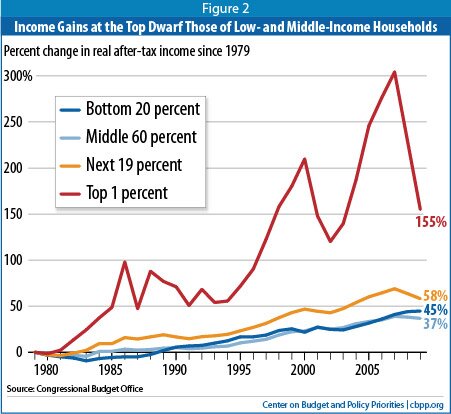CONTRIBUTE! VOLUNTEER! CONTACT US!
Grow with Us Plant Sale!
Get all of your garden needs and help support DFL48! This year, we’re offering you plant cards at both Gerten’s Greenhouses and Garden Center in Inver Grove Heights and Wagner’s Greenhouse in Minneapolis and Bloomington.
Tweets by @DFL48
TAG | top 1%
10
When Sen. Hann Speaks, Check the Facts
Posted by SD48 DFL Communications Team in David Hann, Issues, News, SD48 GOP
 Our current SD48 Senator and friends held a presser before the April 10 State of the State Address announcing a new “Family Surplus” tax cut. We know whenever we read and hear Republican Orwellian language, it’s important to check the facts.
Our current SD48 Senator and friends held a presser before the April 10 State of the State Address announcing a new “Family Surplus” tax cut. We know whenever we read and hear Republican Orwellian language, it’s important to check the facts.
During his remarks about how awful things have been under Democratic control. We’ve done multiple posts about how Minnesota has outperformed our neighbor to the East, which has been under the kind of Republican control Sen. Hann wants to impose.
But, back to this new tax cut bill. Once again, it’s a percentage across the board on income taxes. Why is that an issue? It benefits those at the top yet again. The Uptake has done a great post on this that includes the video of the conference. Here’s their findings:
- only the progressive (affecting those who are more well off) income tax is included
- someone making $50,000 annually would save $250
- someone making $500,000 annually would save $2,500
- the top 1% of the economy has enjoyed substantially more robust economic recovery from the Republican Great Recession than the 99% of the economy
- more regressive taxes (affecting those who aren’t as well off) like property taxes and sales taxes are, for some reason, not included in the bill he’s carrying
Why are we pointing this out? The Minnesota Tax incidence Study shows the poor and middle class pay 29.9% of their income in state taxes. The highest income bracket? Those folks pay 9.6% of their income. That’s why Sen. Hann always wants to talk percentages and not real money.
You can see the full post here.
David Hann · GOP warn on the middle class · MN vs. WI · Orwellian language · sd48 · Sen. Hann · Senate District 48 · top 1%
Why the Retail Industry Needs a Middle-Out Agenda
 On March 13, 2015, Brendan Duke with the Center for American progress posted an article with this headline and subhead on the organizations site.
On March 13, 2015, Brendan Duke with the Center for American progress posted an article with this headline and subhead on the organizations site.
Mr. Duke talks about how the middle-class squeeze in impacting the retail industry. The organization has produced a report showing that “the median married couple with two kids in the United States made the same in 2012 as they did in 2000 after adjusting for overall inflation. However, the costs of living a middle class life increased living that typical family with $5,500 less to spend on other things.
This squeeze on middle class income reduces buying power and that hurts the retail industry.
The top 1%? They’re not hurting. They saw their income rise by over 15% between 2009 and 2013. Retailers selling to the high end market are doing well. But, that doesn’t spill over into the majority of the retail market.
You can read the full post here.
The logos illustrated above are the property of the organizations shown in them.
99% · GOP war on the Middle Class · high end retail · retail industry · top 1%
20
Tax Fairness Could Mean More Resources
 On February 20, 2015, David Sirota with the NationalMemo.com website, posted an interesting article with the above title.
On February 20, 2015, David Sirota with the NationalMemo.com website, posted an interesting article with the above title.
He starts out talking about our crumbling roads and bridges, schools in need of upgrades, public pension systems being underfunded because cities and states are having problems finding the money to deal with these things.
Mr. Sirota goes on to report “Last month, the nonpartisan Institute on Taxation and Economic Policy found that the poorest 20 percent of households pay on average more than twice the effective state and local tax rate (10.9 percent) as the richest 1 percent of taxpayers (5.4 percent).
In addition the Good Jobs First and the Keystone Research Center find that if tax laws were changed so the highest income earners pay the same tax rate as everyone else, “states an localities would rake in up to $128 billion a year in new revenue. If just the top 1 percent of earners were compelled to pay the typical middle-class tax rate, the report says the change would raise more than $68 billion in new annual revenues.”
He then puts things into context:
- free community college would cost $6 billion annually
- universal pre-kindergarten in all state would cost around $24 billion
- the annual cost to make up the shortfalls in public pensions is $30.5 billion annually
However, the author holds out small hope to have any change to make this equitable due to Republicans controlling many state legislatures.
So, yet another reason to be grateful we live west of the Mississippi.
You can read the full post here.
Elissa Gomez with the National Memo posted this article on their website February 24, 2014.
She cites a new report by the Economic Policy Institute showing the serious problem of growing income inequality in the US has gotten worse over the last few years.
According to the report, income in the nation grew 36.9% between 1979 and 2007, but 53.9% of that growth went to the top 1%. By 2011, the top 1% shared even greater income growth. Would you believe 86.3%?
That means that the average income for the top 1% is 24.4 times greater than the average income of the bottom 99%.
Here are 5 states that are home to the largest income inequality. Click the name to be taken to the details.
Nevada
Wyoming
Michigan
Alaska
Arizona
Today, the US Census is releasing its annual numbers on income, poverty and health insurance coverage. You can bet you’ll be hearing Republican spin on this issue. So, here’s the facts:
- Since 2000, median household income has declined $5,400 in constant 2011 dollars.
- Minnesota’s poverty rate edged up from 8% in the late 90s to 12% today, with even higher rates in Minneapolis and some parts of greater Minnesota.
- The poverty rate for people of color is a staggering 28% in Minnesota and 25% nationally.
- Poverty rates are especially high among young adults at 26%.
- Nearly 1/3 of school children qualify for free lunch, another 7% eligible for reduced price lunch.
- Jobs creation has remained flat while the population has grown 10% over the last decade.
So, how have those with mega bucks been doing during the Great Recession? Watching their inherited wealth grow by leaps and bounds. Want to see by how much? Here’s a graph from the Center on Duget and Policy Priorities:
And, talking about income doesn’t really tell the whole story. It’s about the increasing concentration of wealth with a small population:
So, the next time you hear great gnashing of teeth from our conservative/Republicans about how awful it is to be talking about “wealth distribution”, remember these charts. And, don’t feel too bad for the Koch brothers and their ilk. They’re not feeling sorry for you and what you’ve been through since 2008.
 DFL48
DFL48

